Crustacea
Hi my friends!! This time Suhu Pendidikan.com will share information with all of you, namely about how and what kind of crustaceans are, which also includes understanding, characteristic, complete respiratory and reproductive systems
If you want to know more, please refer to the following explanation :

Definition of Crustaceans
What is meant by Crustacean or can it also be said by Shrimp? which is a very large group of types of arthropods, of which this species has a number reaching more than 52. 000 the species described, After that, this group is usually considered as one of the subphylums.
Which in a group of animals of this type is still classified as one of the most famous animal records such as crabs, lobster, shrimp and barnacles.
Where almost most of the habitats are aquatic animals, both fresh water and sea, although a number of other groups have adapted to some of the life on earth, for example a kind of land crab.
Not only that, almost most of the groups can freely carry out their movements, although some taxa are parasitic and live off their hosts.
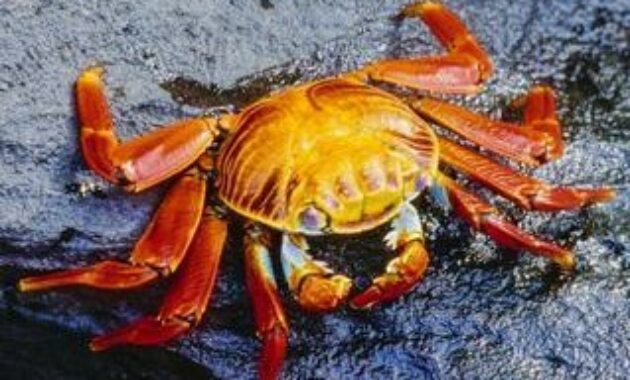
Where in this type of crustacean animal habitat is in fresh water and sea, and only a few are willing to live on land.
After that, at first the term crustaceans could be derived from Latin which is the word“ crustaceans( kind of animalia)” which has meaning“ shelled animal.” This refers to the exoskeleton( outer frame) this animal.
After that the word“ shell” it's not just a shell, which is the actual word shell which is for example like in Mollusca.
After that, the exoskeleton of the Krebs subphylum is universally composed of CaCO3( calcium carbonate) frozen chitin.
Where Crustacea is one of the types of Arthropoda listed in the group Mandibulata and still has a unity with Myriapoda and Hexapoda.
Ciri Crustacea
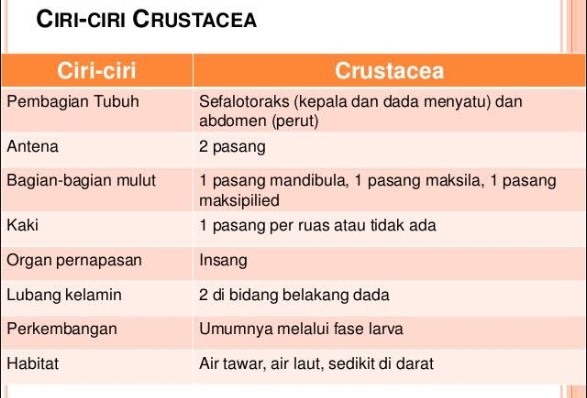
Characteristics of crustaceans universally are having a very hard exoskeleton.
Where the hard exoskeleton must be replaced( moulting) with the presence of the body part of the cancer subfile and can also be divided into several parts, including the head( pronounced cephalon), chest( pronounced thorax) and the stomach.
But sometimes the head and chest can be connected to the cephalothorax and have a cover like a large tank.
Crustacean Body Layer
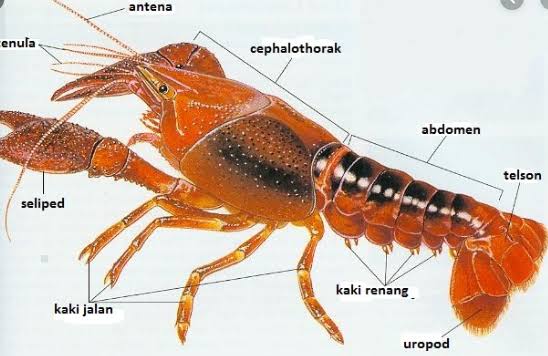
After that regarding the layers of the Crustacean body which looks like it has another bonus limb( on: appendage) who are special in nature with great variety- of sorts, especially in animals such as lobsters and freshwater crayfish( on: crayfish) have 19 install.
Which is usually, to 2 The initial companion is in the form of an antenna that acts as a sensory apparatus.
Now in this animal member, it is one type of arthropod animal that has 2 attach the antenna.
After that on 3 The next pair are body parts which are usually shells used to chew food, The first ones in this section are the basic jaws and the 2 The next companion is in the form of the upper jaw.
Now after that, the next bonus organ in general is a pair of legs that are used to carry out movements.
Respiratory System and Crustacean Cycle
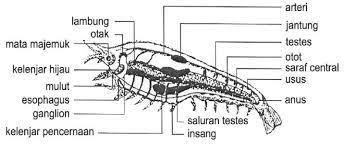
In aged Crustacea that have large dimensions perform respiration with late gills. In which the oxygen that has been extracted from the gills will then be distributed through the rotation system.
On the other hand, the part with small dimensions, let alone smaller than the cancer subfile, which they perform the late breathing of a system that is on the surface of the body.
After that at the time of gas exchange that passes through the surface of the body usually takes place in the thin zone of the cuticle.
Where the rotation system in crustaceans is an open-circuit rotation system consisting of a heart located behind the heart., by having one or more arteries( but the description is only in Malacostraca) as well as several channels to return hemolymph back to the heart.
Crustacean Reproductive System
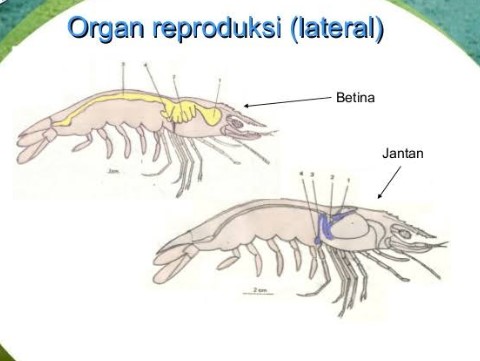
After that almost loyal crustaceans except for barnacles ( on: barnacle) can easily distinguish between males and females( gonocorrhiza), and they reproduce intimately.
For example, crabs and lobsters that live in fresh water, they use all the extra limbs that occur in the stomach to carry out the transformation of semen through the female reproductive hole during the marriage process..
Where almost most of the aquatic animal groups from the cancer subfile pass one or more 2 larvae session that can swim freely.
Crustacean Excretory System

After that, one of the earliest excretory organs from crustaceans is the presence of a pair of antennae glands and the upper jaw. Now this gland is also known as the green gland. Which is more than 90% a waste of nitrogen released into the presence of ammonia.
Crustacean Identity
- Universally they reproduce by passing the larval stage
- Have 2( 2) genital opening behind the chest
- His life takes place in fresh water as well as sea water and there are also some, among others, who live on land.
- On the front there is 2 make eyes with composite gaze
- On the back of the shrimp, the back of the shrimp is bent until it starts from the head to meet the tail
- Has digestive equipment: starting from the mouth-esophagus/oesophagus-after that the stomach-intestines-and also the anus
The respiratory system passes through the gills
- In all segments of the body there is a pair of legs
- On the stomach there is 5( 5) swimming legs
- On the chest there is a pair of antennae, After that, they have jaws at the top and bottom too
- On the head and chest there are 5( 5) pair of legs which among others( the couple has claws as well as that 4 normal feet)
- On the head has a shell that acts as a protector.
- After that, the crustacean nerves use a rope ladder nervous system
- Has an open rotation system
- Fertilizing internally
Classification of crustaceans
Based on the dimensions of his body, where these crustaceans can be categorized into several types, which, among others, namely:
1. Entomostraca( Low Level Shrimp)
Universally, members of the Entomostraca group are a compiler of zooplankton, which generally often floats in the depths of the water which in turn is a fish meal. Now for the division of orders that are still classified into the Entomostraca group, namely:, the following explanation.
The first is Branchiopods, for example, Daphnia pulex and Asellus aquaticus, which are generally known by the term water lice, are bred by parthenogenesis and are also a maker of zooplankton.
The second is Ostracoda, for example a kind of Cypris candida, productive codons, which generally live in fresh water and are known as plankton, This type has a very small body shape and can move with antennas.
The third is Copepods, such as Argulus indicus and also Cylop, whose habitat can live in seawater and fresh water and he is also a type of plant animal that functions like a parasite by having a clear body segment.
The fourth is Cirripedia, for example a kind of slack or shortness of breath, which in the Sacculina is protected by the head and breasts of the Karapaks which have the shape of a kind of disc and are generally attached to rocks as well as some objects in the sea.
2. Malakostraca( Large Level Shrimp)
Malakostraca is a type of animal that most of its habitat lives in fresh water and sea, and this type has a body shape that is composed of cephalothorax and abdomen( abdomen). Where in Malakostraca this can be distinguished as 3 orders which include:.
The first one is Isopod, have a flat body, dorsiventral as well as some of the same legs. For example, a kind of Onicus asellus or commonly pronounced with( ship fleas) and also Limnoria lignorum after that in both types of animals are wooden elevators
The second is Stomatopoda: for example a kind of squilla empusa or also called( Grasshopper shrimp) whose habitat generally lives in sea water and has a shape like a praying grasshopper, has a distinctive characteristic pattern that is very prominent. On the back of his head is a tank. After that the head has also been equipped 2 anterior segment, is the eye as well as the antenna.
The third is Decapoda, For example, some kind of shrimp, crabs and crabs with small dimensions. Which in an animal that has numbered legs 10 is a member of a group of shrimp has a position in human survival and is also useful to be used as a source of food that has a very large protein content. For example a kind of crab and shrimp.
Examples and Benefits of Crustaceans
In animals, Crustaceans have the most important nutrients for human survival which are often used as a source of food..
Which are usually the most numerous and become the most producer of these types of food ingredients, including those from the Decapoda Order.,
Which is listed in the Malacostraca Class; for example some kind of lobster, shrimp, good crabs that live in fresh water as well as in the sea.
1. Mangrove Crab or Black Crab
- Mangrove Crab or Black Crab
- Mangrove Crab or Black Crab
- Enter the Classroom. Malacostraca
- Enter In Order. Decapoda
- Infraordo. Brachyura
- Family. Portunidae
- Genus. Scylla
- Species.
- Scylla serrata
In this type of crab animal, it is categorized as one of the favorite foods and has a very delicious taste, Moreover, he is very popular in Southeast Asia.
2. American Lobster
- In the Malacostraca Class
- Ordo Decapoda
- Familia Nephropidae
- Genus Homarus
- Spesies Homarus americanus
The dimension of this Lobster is to reach the weight 20 kilograms as well is the type that is very much caught.
3. Australian Red Crayfish
- Enter the Malacostraca Class
- Ordo Decapoda
- Family Parastacidae
- Genus Cherax
- Species.
- Cherax quadricarinatus
This type is often known as a lobster that lives in fresh water( or also pronounced with blue lobster) and is one type of animal that has been popular and is generally often used as a pet in its special aquarium in Indonesia.
4. Windu Shrimp( Giant Tiger Shrimp)
- Malacostraca Class
- Ordo Decapoda
- Suborder Dendrobranch
- Superfamily Penaeoidea
- Family Penaeidae
- Genus Penaeus
- Penaeus monodon Spesies species
This type of shrimp has been very often used as a food ingredient in Indonesia.
Thus and that is all that Suhu Pendidikan.com can convey about the material about Crustaceans, hopefully what is conveyed can be useful, thank you.
Also Read Other Articles :
- Examples of species
- Drafter's job
- Meaning of dreams about boarding a plane
- Meaning of dreams of an accident
The post Crustacea appeared first on this page.